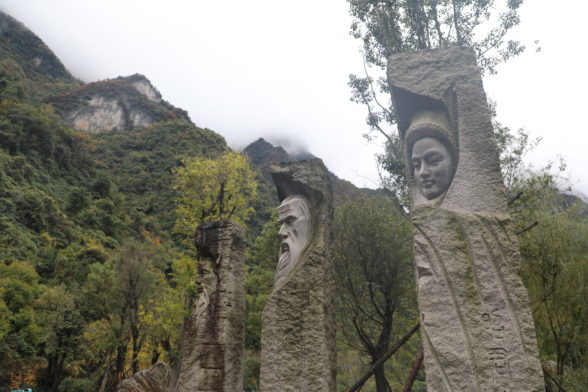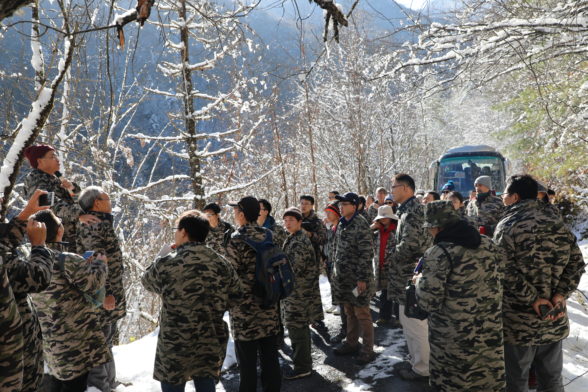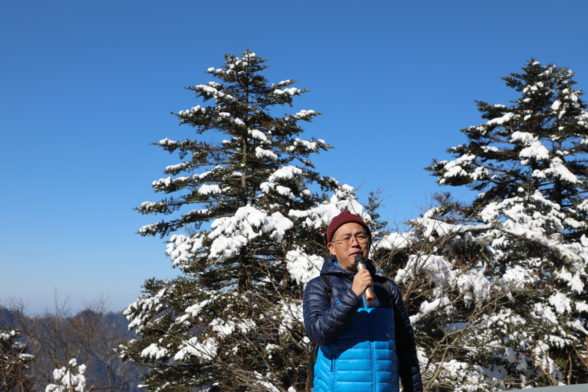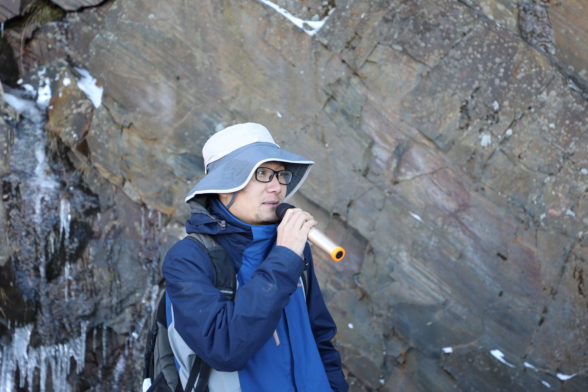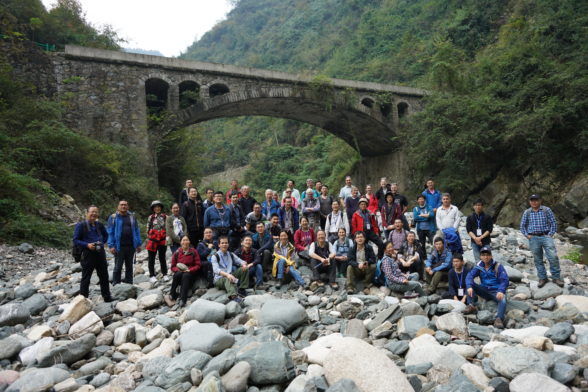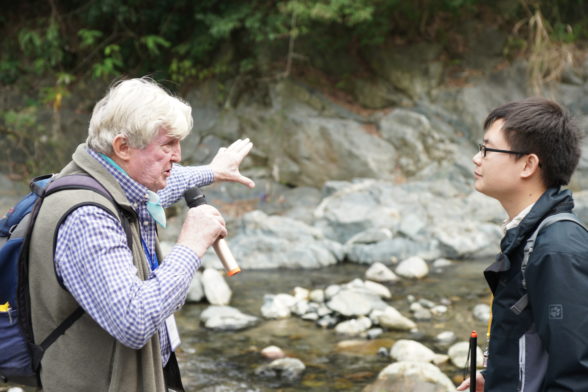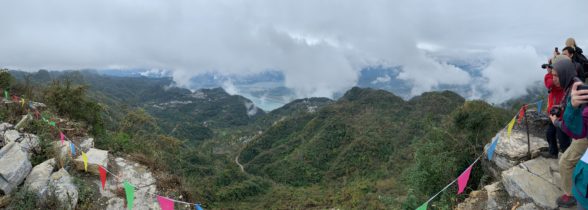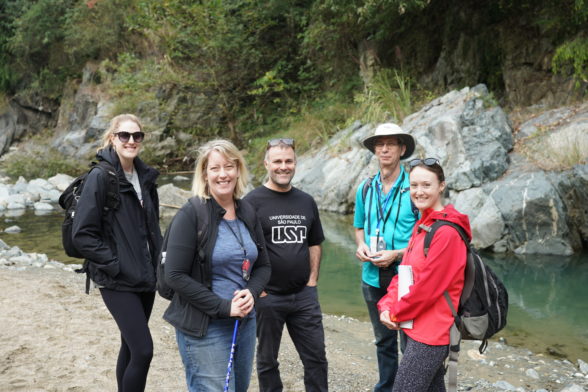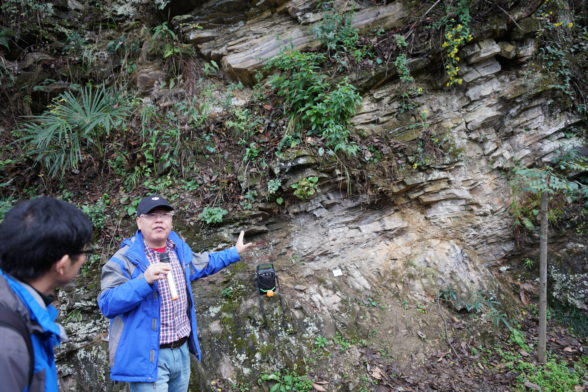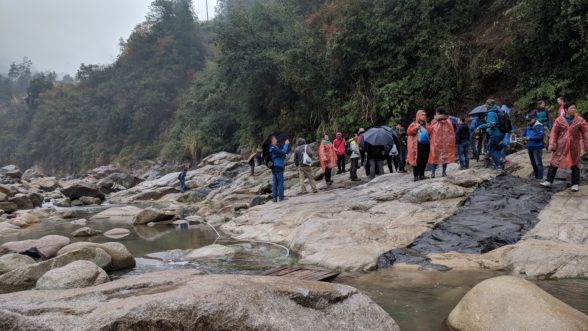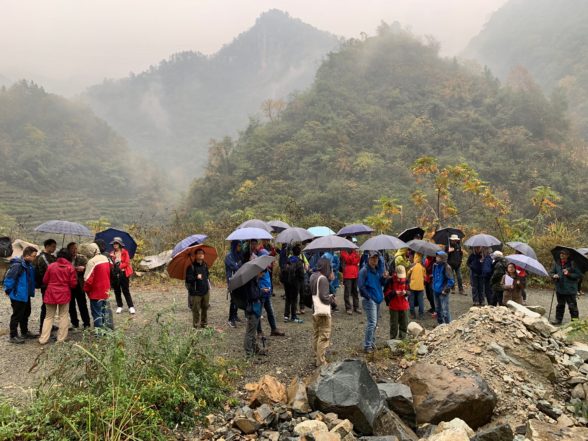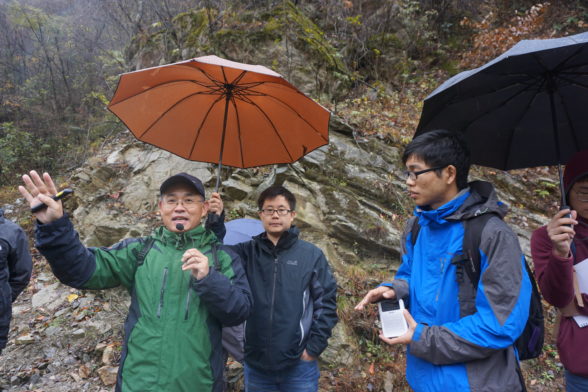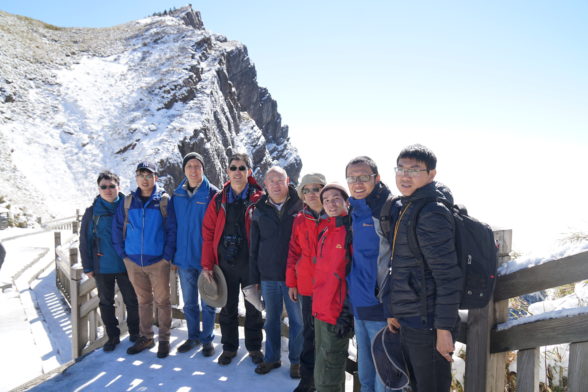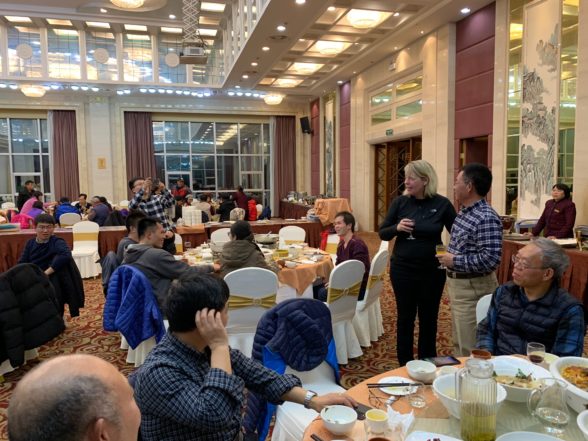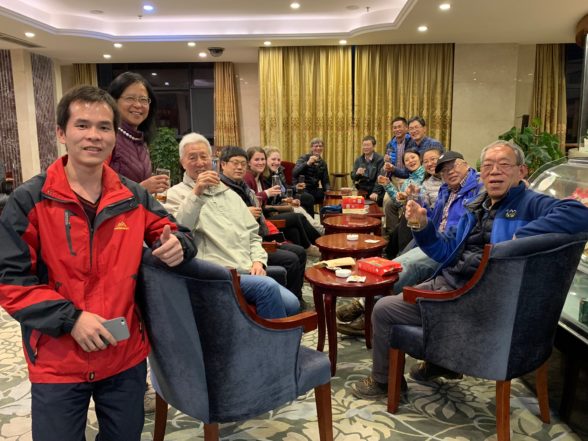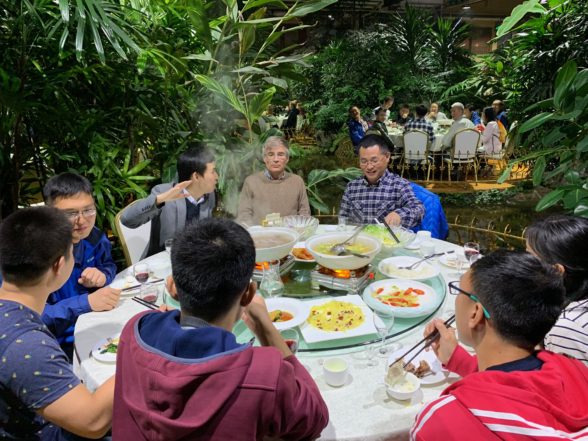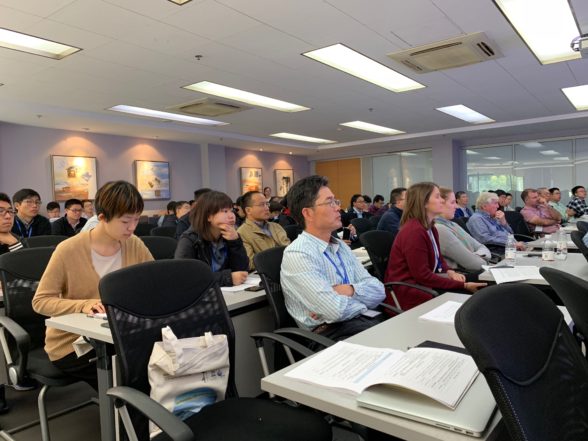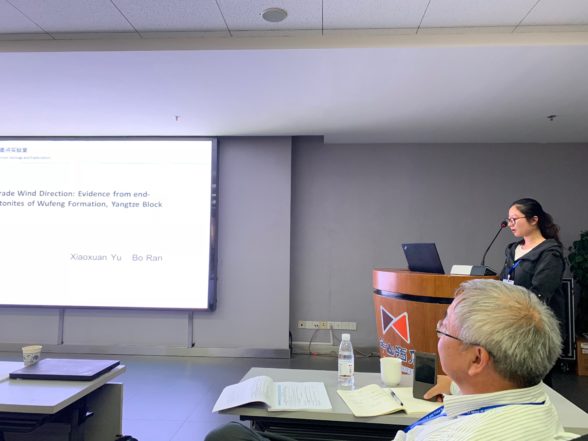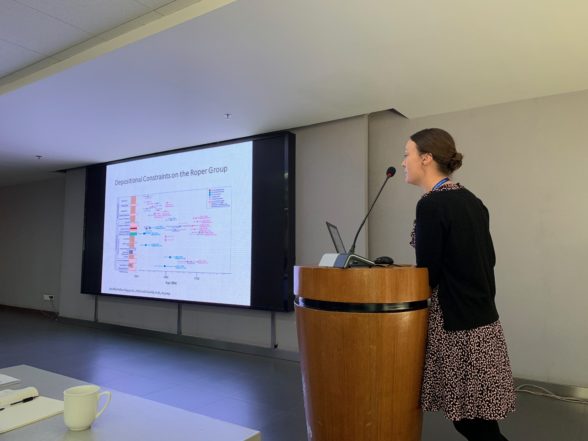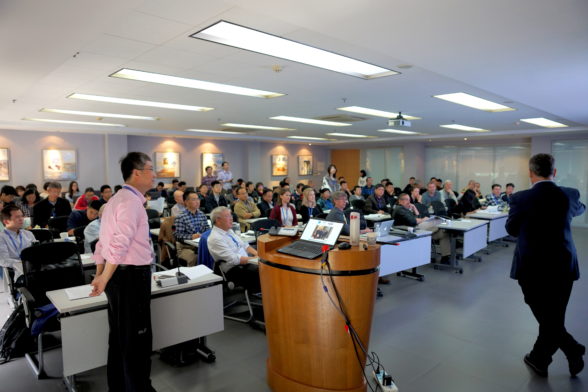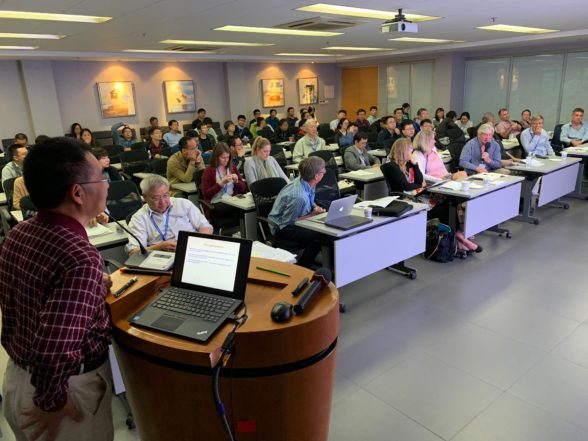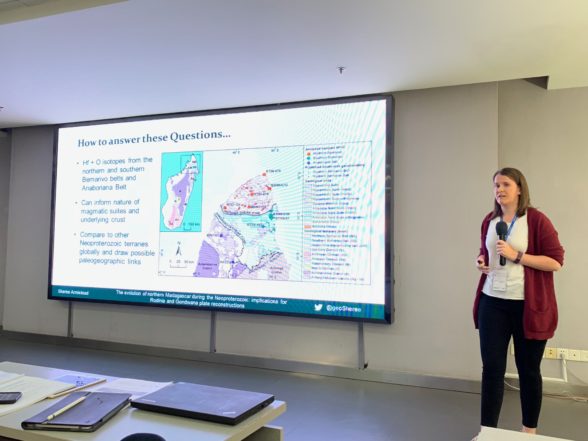IGCP 648 2018 Field Symposium
From Rodinia to Pangea: Geodynamics, Life and Climate
1-9 November, 2018 | Yichang, Three Gorges region in South China
By Georgina Virgo
November 1st, 2018, marked the commencement of the IGCP 648 Field Symposium in South China; a Supercontinent Cycles and Global Geodynamics project that unites an array of geoscientists to explore the occurrence, evolution and geodynamics of supercontinents through time. This initiative is supported by the United Nations Educational, Scientific and Cultural Organisation (UNESCO) and the International Union of Geological Sciences (IUGS). The symposium consisted of a two day indoor meeting and six day field trip around Yichang and Shennongjia in South China.
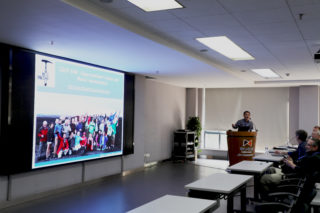
The indoor meeting began on Friday 2nd November, with an opening speech from the Chairman of the Organising Committee and Secretary of the Scientific Committee, Shihong Zhang (pictured). This set the scene for the symposium, introducing the organisers and sponsors, keynote speakers and some of the highly anticipated presentations for the next two days.
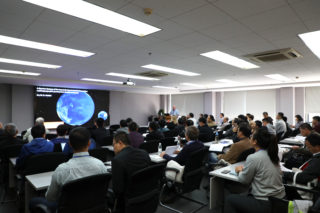
The first session consisted of keynote presentations by Ian Dalziel (pictured) and Zheng-Xiang Li, which established the quality for the meeting by reviewing trans-Pacific geologic correlations and showcasing exciting research from Australia. The following session saw keynote talks from Timothy Kusky and Åke Johansson, accompanied by two other fantastic presentations covering topics of plate tectonics and Palaeoproterozoic orogenies.
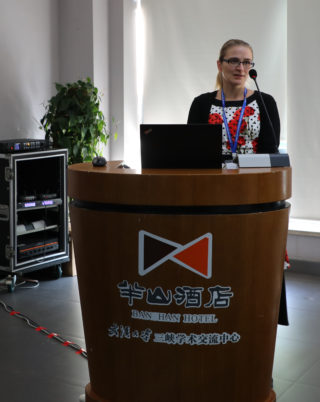
After a lunch break, the sessions continued with keynote presentations from Alan Collins and Bruce Eglington, who discussed global reconstructions and modelling. The accompanying three presentations examined specific case studies from Madagascar, Poland and North China. The final session included keynote presentations by Johanna Salminen (pictured) and Shuguang Song, followed by two other interesting talks. This session looked at insights into large igneous provinces (LIP) and covered research of the South China Block (SCB). The first day was wrapped up by poster presentations and a lovely dinner at the hotel, where delegates were able to network.
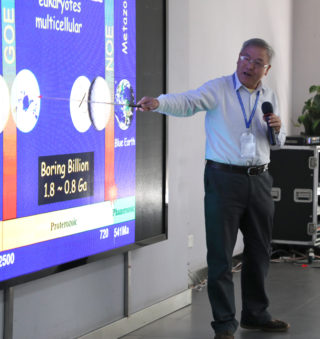
The following day got off to a brilliant start with a keynote presentation from Shuan-Hong Zhang who discussed “the Boring Billion”. The three talks that proceeded included geochronological and palaeomagnetic studies in Australia and China, and a keynote presentation from Hao Deng about Ophiolite Complexes in South China. The next session consisted of three talks, beginning with a keynote presentation from Maoyan Zhu (pictured) on the Neoproterozoic stratigraphy in South China. This seamlessly transitioned into talks covering Precambrian-Cambrian geochronology and provenance in South China.
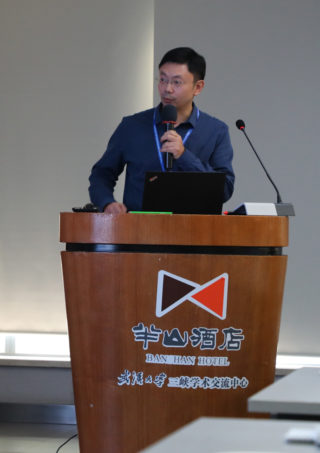
The afternoon session was initiated by a keynote presentation from Cao Li, accompanied by four other exciting presentations. Geochemistry was the theme for this session, covering topics from redox conditions, organic carbon production and isotopic constraints. The final session for the indoor meeting began with two keynote presentations by Xiangkun Zhu and Junxuan Fan (pictured). The first keynote followed on from the geochemistry theme in the previous session, looking at isotope signatures in the Ediacaran. The second keynote gave us a fascinating insight into big data platforms, which are accessible repositories that share and compile data in the scientific community. Two talks covering the sedimentology and palaeogeography at the onset of the Cryogenian glaciations wrapped up the session.
The meeting was closed with acknowledgements and conclusive remarks from Bruce Eglington and Shihong Zhang, with accolades to the students and keynote presenters. The day concluded with an introductory session to the fieldtrip, a delicious dinner at the hotel, and some music and dance.

Sunday, 4th November, saw the beginning of the field trip. The locations for the field trip were selected because they possess information regarding the evolution of supercontinent Rodinia, onset and termination of the Cryogenian glaciations, biological evolution during the Ediacaran, and tectonic reorganisation of the South China Block from Rodinia to Pangea. The field trip posed a tremendous opportunity to see, first hand, the scientific content on South China presented in the meeting.
Day one of the field trip was around Three Gorges region. We headed out to see the Miaowan ophiolite complex, situated northeast of the Yangtze River. During our five stops we observed diabasic sheeted dikes, cross cutting relationships between metagabbro and metadiabase, relic pillow basalts, foliated metabasalt and ductile deformed gabbro. This was a fantastic way to start the field trip, allowing the delegates to get a taste for the geology in South China. The day was filled with thought-provoking discussions, led by both experts, academics and students alike.

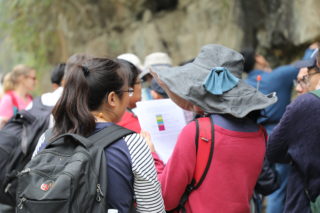
Neoproterozoic magmatism was the theme for the second day of the field trip, where the group headed north of Yichang near Xiaofeng. The focus was on the Huangling complex and Xiaofeng dykes, in the Xiaofeng- Liantuo sections. The four stops demonstrated monzogranites (granodiorites), felsic, intermediate and mafic dykes, and magma mixing. Akin to the previous day, the outcrops evoked interesting discussions between local and international delegates.
The third day of the field trip shifted geological focus, as we set off to look at the Neoproterozoic stratigraphy, in particular the Liantuo-Doushantuo-Dengying formations. The outcrops are located in the Huajipo-Jiulongwan sections northwest of Yichang. The ten stops on this day covered: the unconformable contact between the Liantuo formation and the underlying granitic complex; tuffaceous horizons and diamictite facies of the Cryogenian glacial sediments; carbonate concretions, chert nodules and black shales of the cap carbonate; and laminated carbonates of the overlying Dengying formation. These stops made for an exciting day in the field, accompanied by idyllic views of mountain villages and Three Gorges Dam.
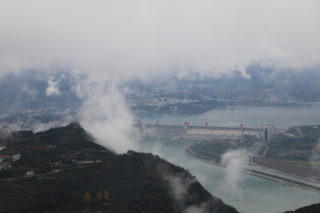
Kongling Group and Shuiyuesi ophiolitic melange was planned for day four of the field trip, as we made our way from Yichang to Shennongjia. These outcrops are located north of Yichang in the Wuduhe section. During our five stops we looked at amphibolite crosscut by plagiogranite dykes, pelitic granulites, dolerite dykes and k-feldspar granites. Despite the rainy weather, the day was filled with positivity as delegates explored and discussed the fascinating geology in the area.
A change of pace up to the Shennongjia had everyone feeling refreshed for the fifth day of the field trip. Our day started with an excursion to see the golden snub-nosed monkeys, an endangered species that is endemic to the mountainous forests of central and southwest China. As we walked over to their habitat, we were able to take in the beautiful scenery; blue skies and snow-topped trees surrounded us.
Sightseeing was paired with interesting geology, where we looked at the Mesoproterozoic Shennongjia Group. Our eight stops included the conglomerate of the Cryogenian glacial sediments, nodular limestone, stromatolitic dolomite, gravel bearing dolomite, pelitic dolomite, and dolomite intruded with a mafic sill.
Dinner acted as a farewell celebration for delegates who were not returning to the accommodation in Yichang the following night. There were a number of speeches, from scientific and organising committee members, as well as students. The speeches imparted an overwhelming sense of admiration for the conference organisers and fellow delegates, demonstrating the closeness of the group that developed throughout the trip. The final dinner highlighted the family nature of IGCP 648, which continues to expand and strengthen with each conference.

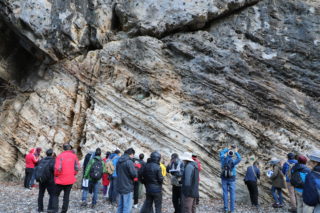
As we made our way back to Yichang on the last day, we went to see the Guanmenshan section, located west from the locations on the previous day. The five stops demonstrated stromatolitic and siliceous banded dolomite, pelitic dolomite, iron-bearing siliceous siltstones, black siliceous siltstones and the diamictite of the Cryogenian glacial sediment. The geology for the day was accompanied with sightseeing China’s national treasure, the giant panda, and other interesting animal and plant species.
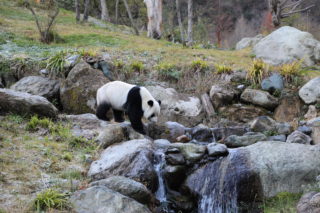
Contact details were exchanged and future collaborations were discussed as we said goodbye to the delegates travelling straight to the airport.
Upon returning to the accommodation in Yichang, it was time to pack up our things and enjoy one last dinner with the remaining delegates, before going our separate ways the following morning.
The IGCP 648 in South China proved to be a wonderfully successful and interesting conference, made possible by the exceptional coordination from the organising committee, scientific excellence from presenters at the indoor meeting and the enthusiastic participation of all the delegates. This conference set the standard for future IGCP 648 symposiums, and established a platform for future collaboration between geoscientists engaging in research of supercontinent cycles and global geodynamics.


